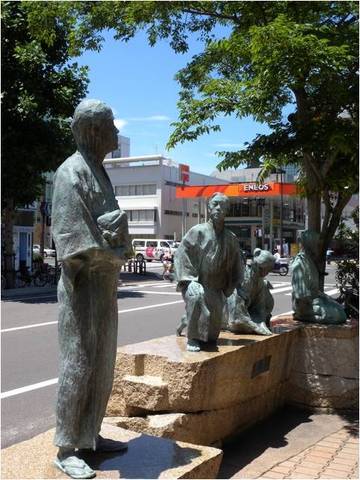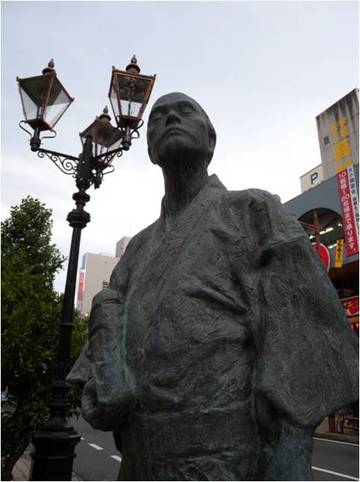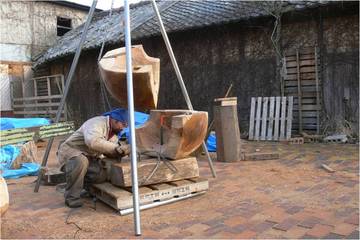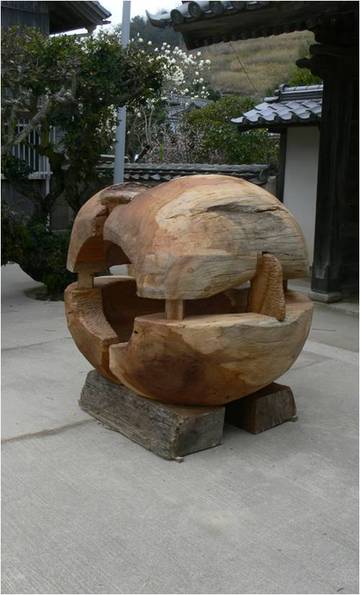KITAHAMA ALLEY
2010年07月29日
KITAHAMA ALLEY
(北浜アリー)
http://www.kitahama-alley.jp/
http://www.kitahama-alley.jp/
The call came through at around 2:00 am. U-n-g-g I answered?
“JC here … I’ve been thinking. The sculpture article was so-so. I want something with some zip”. “Something interesting to make the blog hit counter belch smoke with hits.” “Really make the number counter move.” “This just might secure your job at Ashita Sanuki Blogs for next month.”
It was there that I sensed a weight in his voice that made me wake up.
Something to make the blog hit counter spin? Break the spring in the old machine? Then it could only be an article about Kitahama Alley I thought? Never one to be too preoccupied with matters of nomenclature I decided to investigate this north alley place, and so in the morning I went out in the heat, the incredible heat on the old bicycle with camera and did it.



Kitahama Alley is just that, an alley in the north beach area of Takamatsu a remnant from the Showa period. Conceived in 2001, It’s a concept developed from some old and abandoned warehouses tacked together with wrought iron, brown and rusting corrugated metal roofing materials, dark, unpainted woods etc. Throw in some colorful plants and flowers and the effect is quite wonderful for an atmosphere of an earlier era in the old dock area of the new city. The place is a real trip, full of quirky little coffee shops, restaurants, bars, hairdressers and even a wedding reception and planning company.
www.sara-izara.com
http://www.machi-koto.com/shopdata/index/id/5271449ebad2812b
I interviewed a couple of people there about the concept of Kitahama Alley and they said it was inspired by The Fisherman’s Wharf area in San Francisco and New York’s Pier 17.

It’s a cool way to spend a few hours on a date I think? There are interior shops with some unusual products and a furniture shop with a lot of interesting East Asian and African furniture. And South East Asian food. This is a great place to kill a few hours on a Sunday for sure.


Kitahama Alley has quite a full event calendar so be sure to check the top link for the music and art exhibition events.
The area is so easy to find and ten minutes on foot from the central JR rail station. A Google map search will soon bring it up and all one has to do to get there is follow the road across from the station to the east, following the harbor line for a few minutes and it’ll be on the right.


Please go and take a look. And don’t forget to keep all those cards and letters to pat’s blog coming in! Leave a comment and we’ll get back to you for sure!

Posted by pat at
15:34
│Exciting&Beauty Places
SCULPTURE IN TAKAMATSU
2010年07月21日
“But what does it mean”? I must have heard this questions a couple of times a day from people looking at modern paintings and sculptures when I was an education officer in the State Gallery years ago. The answer was always the same, “It ‘means’ whatever you allow yourself to see in it. To ‘enjoy’ art seems still somewhat difficult for many which is odd as music is more abstract than visual art yet rarely, if ever, analyzed in the same way.
Takamatsu is a city just bristling with interesting sculpture and I wish I could write about just how much of it there is to be enjoyed around the city. Heaps of it in fact and there is a useful little book available published by Kagawa Shogo Kaigisho entitled ‘Art Tourism’ (Country Museum Kagawa) with 110 pages of art maps including those with sculptures. I picked up a copy from the Department of Tourism in town and it’s well worthwhile having a copy of this great little booklet.
OK, before the editor JC gets mad I’ll get down to business. Let’s start with just a couple of local sculptures including the favorite ‘The Return of the Father’ a wonderful work in bronze right across from Central Park on Kikuchikan Dori in Takamatsu. This is a single, electrically charged moment of dark energy from the famous play of the same name by Kikuchi Kan (1888~1948) a Takamatsu playwright.
This reminds me of the wonderful parable from the bible ‘The Prodigal Son’ and the father’s forgiveness of the son, who after a profligate and wasteful life is not only forgiven but also feted when reunited into the family. The Lotus Sutra in Buddhism has its own ‘Prodigal Son’ story too and perhaps it’s a universally understood quality but oh-so-difficult act of forgiveness to those we once loved, have hurt us, then seek reconciliation that holds such appeal. This is a ‘Prodigal Dad’ situation with a father returning home after years away in a libertine and wanton life and now in this critical moment, the indignant son’s rejection despite the rest of the family’s mixed feelings.

Powerful stuff indeed and the father’s face tells the story far better than I ever could. I cannot help but look at this every time I pass by on my way to work. Curiously, there is a small orange tree right next to it bearing fruit every year and I always think there may be a related lesson from the tree and its fruit to this story somewhere as well?

From the figurative and classical in bronze to the abstract in stainless steel. This totemic, cosmic beauty in Sunport just erected the day I took this photo is a stunner! What does it mean? Does it matter and who cares anyway? It’s another very engaging work that makes my mind and hopefully everyone else’s think about all kinds of wonderful stuff.

There are a few foreign artists in Takamatsu and Luca Roma a professional Italian sculptor is one. Luca said this piece is one of his recent works and meant to be appreciated by climbing into it and experiencing the sculpture from the inside.



Takamatsu is a city just bristling with interesting sculpture and I wish I could write about just how much of it there is to be enjoyed around the city. Heaps of it in fact and there is a useful little book available published by Kagawa Shogo Kaigisho entitled ‘Art Tourism’ (Country Museum Kagawa) with 110 pages of art maps including those with sculptures. I picked up a copy from the Department of Tourism in town and it’s well worthwhile having a copy of this great little booklet.
OK, before the editor JC gets mad I’ll get down to business. Let’s start with just a couple of local sculptures including the favorite ‘The Return of the Father’ a wonderful work in bronze right across from Central Park on Kikuchikan Dori in Takamatsu. This is a single, electrically charged moment of dark energy from the famous play of the same name by Kikuchi Kan (1888~1948) a Takamatsu playwright.
This reminds me of the wonderful parable from the bible ‘The Prodigal Son’ and the father’s forgiveness of the son, who after a profligate and wasteful life is not only forgiven but also feted when reunited into the family. The Lotus Sutra in Buddhism has its own ‘Prodigal Son’ story too and perhaps it’s a universally understood quality but oh-so-difficult act of forgiveness to those we once loved, have hurt us, then seek reconciliation that holds such appeal. This is a ‘Prodigal Dad’ situation with a father returning home after years away in a libertine and wanton life and now in this critical moment, the indignant son’s rejection despite the rest of the family’s mixed feelings.

Powerful stuff indeed and the father’s face tells the story far better than I ever could. I cannot help but look at this every time I pass by on my way to work. Curiously, there is a small orange tree right next to it bearing fruit every year and I always think there may be a related lesson from the tree and its fruit to this story somewhere as well?

From the figurative and classical in bronze to the abstract in stainless steel. This totemic, cosmic beauty in Sunport just erected the day I took this photo is a stunner! What does it mean? Does it matter and who cares anyway? It’s another very engaging work that makes my mind and hopefully everyone else’s think about all kinds of wonderful stuff.

There are a few foreign artists in Takamatsu and Luca Roma a professional Italian sculptor is one. Luca said this piece is one of his recent works and meant to be appreciated by climbing into it and experiencing the sculpture from the inside.



Towards for the bonsai
2010年07月14日
BONSAI AND THE FOREIGN APPROACH
Another rainy day in the Rainy Season. The rain peppered down on the office window. “Come in.” JC mumbled. “Leave the door open, don’t sit down you’ll be leaving soon.”
‘What’s the assignment this week boss’?
“Bonsai”
‘But we’ve already done bonsai’ ?
“I don’t care. Get on your bike, take your camera and get out there and get me a story.” “And make it readable and interesting too.”
‘OK I said. Putting on my damp cap, then rode my bicycle off into the rain towards Kinashi for the bonsai number two scoop. Life as an Ashita-Sanuki blogger can be tough … and the salary, don’t get me started about the salary. Someday I’ll look back on all this I thought? Then laugh nervously and change the subject.
But wait? Peddling in the rain, I had an idea! Why not a story on the bonsai cultivated and grown by foreigners? That’s it I thought! The perfect bonsai number two story and it’ll keep JC happy.
(bonsai by A. Naudi)

A ‘way’ that’s how a younger Australian Adrian Naudi described bonsai. ‘Do’ in Japanese (道) and a way it is for many young foreign bonsai artists studying and practicing here in Japan. In the Kinashi area of Takamatsu, there are people

(photo A. Naudi)
from Europe, Ireland, Australia, the UK and the States giving up a few years of their lives to pursue the art and I admire them for that. I’ll let Adrian speak for himself in the quote below about his experience in Kinashi and its bonsai.
“Pat,
What was I doing in these photos?
These photos were taken during my stay in Japan (2000-2002). During this time I volunteered at a bonsai nursery just outside of Takamatsu. During my two years there, I gained an appreciation of posture and flow in bonsai, and how to use wire-fixing techniques to accentuate the natural curves and flexibility in a range of different tree types.
The techniques?
The main skills and techniques I learned centered around feeding and repotting bonsai of various ages, trimming new shoots and branches, wiring and re-wiring trees to reinforce and assist in branch redirection. These were all done at different times of the year and with 100's of trees at the nursery, there was never a dull moment.
Ideas about the experience or thoughts on bonsai?
Bonsai, like shodo, like ikebana, like sado, like budo, like shakuhachi, like zen are all pathways to higher consciousness and are in essence one in the same. They each demand total immersion in the moment and in return provide the practitioner with the opportunity to harness clarity of mind. They each provide gateways through which one can come to understand the self (or the relative) and in turn the self (or the absolute). They each embody creation, the expression of life itself. They "are", bonsai "is". (A. Naudi)
We have our own ‘ways’ in the West of course, writing, dance, are all ways to a higher understand of the nature of ‘self’.
(photo Xavier Brusset)

Another interesting young man here is the Frenchman Xavier Brusset. After studying horticulture in France, Xavier came to Japan in 2004 and undertook an apprenticeship in Tokyo followed by another 3 years study in Kinashi. Xavier now has his own business and some of the bonsai I find particularly tasteful and creative. Please do take the time to look at these pictures, as they are remarkable.
http://www.lemidoridesign.com/
http://midoridesign3ki.blogspot.com/
Xavier explained to me that while he’s still interested in the traditional bonsai techniques, his focus is now on “modern” bonsai, which he says are more accessible in terms of size and cost.
“The same way of thinking, just with a different spirit”
“I still love the "classic" bonsai but now it's mainly a hobby. These days I try to do, what a lot of people call, modern bonsai.
Nowadays few people are still interested in classical bonsai, maybe cause of their size and certainly because of the price, "modern" bonsai is more accessible. In this case the rules are less strict, I work with smaller materials, and often use pots that are not normally made for bonsais. But for me it's nearly the same way of thinking, just with a different spirit. I'm also doing kokedama, in this case instead of a pot we create a moss ball, the plants species can be the same than the ones use in bonsais or just wild herbs or indoor plants.”
Xavier Brusset.




